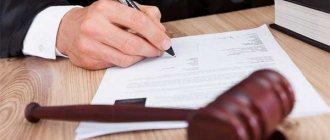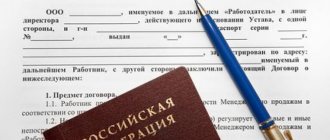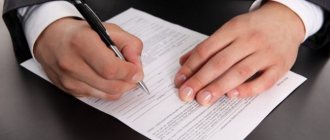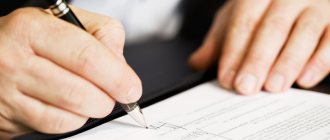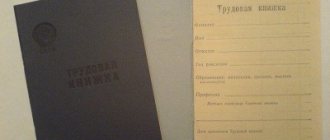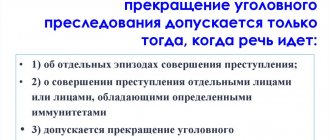Forging a signature is illegal, and therefore may result in administrative or criminal liability. But not in every case, the mere fact of falsifying an autograph will lead to the dock or allow the fraudster to be sent to jail. There must be good reasons for this, which lawyer Alexey Karabaev FAN .
From the personal archive of Alexey Karabaev /
What is signature falsification
There are different cases when one person signs documents for another. Situations can be quite harmless. For example, when a schoolchild copies a parent’s autograph in a diary so that the father does not see a bad mark. Or one employee signs for another when receiving a salary in the accounting department, because he has no time, but he comes to collect the money himself.
There are situations that are even more serious. For example, an accounting employee signs the chief accountant’s autograph on reporting documents for the tax office. At the same time, the manager is not notified about this, but simply sends reporting papers, because deadlines are running out, and the chief accountant has no time.
The peculiarity of these situations is that forging signatures on documents does not lead to any serious negative consequences. One fine day, the parents will still punish the student, the salary will reach the recipient, and the company’s accounting department will submit reports on time.
It’s another matter when an autograph is signed not for a good purpose, but in order to receive a certain benefit, most often material. Or the document has social importance, official status. Then the consequences of having a signature of a person who did not have the right and grounds to sign the paper will be different.
“The presence of a person’s signature on an official document gives it legal force,” comments lawyer Alexey Karabaev. “That’s why you can’t put someone else’s autograph on papers, no one has the right to do that.” According to the law, this is considered counterfeit and carries criminal penalties.”
pixabay.com/
Situation 4 – Enforcement proceedings have been initiated under an agreement with a forged signature
Here the situation is, of course, more complicated. If you have already been recognized as a debtor under an agreement with a forged signature and the court has made a decision to collect the debt from you, then you will have to return the attention of the courts to the very beginning of your story, while at the same time fighting off the bailiffs.
What to do in this case?
- File a claim to invalidate an agreement with a forged signature. And act according to the scheme described in situation 2.
- Apply for the suspension of enforcement proceedings until the court makes a decision on your claim about the invalidity of the contract.
Formally, you do not have grounds for suspension in connection with filing such a claim, but you can refer to paragraph 1 of part 2 of Article 39 of the Law “On Enforcement Proceedings” or challenge the decisions of the bailiff. It all depends on your skill in applying the rules on appeal. Essentially, your task is to wait for the decision to invalidate the contract, on the basis of which a reversal of execution will be possible.
As a sample, you can use the documents prepared by us to protect the rights of our clients, inserting your data into them.
Administrative claim against the bailiff (official forgery)
Complaint against a bailiff to the Federal Bailiff Service (official forgery)
Types of forgery of an official's signature
Depending on how the falsification was carried out, two types are distinguished.
• Manual. The autograph is made by hand - without the use of any technical means. This can be done by a craftsman who has practiced a little copying his boss’s squiggle and even succeeded in this. It is easy to determine the fact of falsification in this case: often the perpetrator of the forgery does not bother to make it as similar as possible. And sometimes, although he tries, he cannot fully recreate the force of hand pressure, all the hooks and curls that are present in the original.
• Technical. A more complex type of falsification. Technical forgery of a signature implies the use of any auxiliary means. For example, first the autograph is drawn with a pencil, achieving maximum similarity, and then outlined with a pen. Or they use copy paper, which allows you to apply a contour as close as possible to the original and trace it with paste. In other cases, the original signature is pressed onto paper, after which it is drawn with a pen, or even printed on a laser printer, which makes the image almost indistinguishable from a hand stroke.
The manner in which the falsification was carried out matters only to the fraudster. By hand or on a printer, using carbon paper or by pressing - for law enforcement agencies and the judicial system it does not matter how the fake was made. The only consequences that matter are the consequences it entails.
pixabay.com/
Characteristic features of the original
Now to the question of how to distinguish a fake PTS.
PTS is a special document that has a regulated design, is printed only by authorized organizations, and also differs in a number of elements.
If we talk about how to identify a fake PTS, then you need to know the signs of a real document. The original consists of:
- series and numbers;
- Vehicle VIN code;
- full name of the vehicle;
- vehicle categories;
- year of manufacture of the machine;
- engine models and numbers;
- chassis and body serial number;
- body colors;
- motor power;
- environmental class;
- permissible maximum weight;
- vehicle manufacturing organization;
- other data.
In Russia, there is a uniform standard and format for PTS. If you know all its features, this will help you avoid problems with fakes. That is, you will be able to easily figure out how to distinguish a fake PTS from the original.
Article of the Criminal Code of the Russian Federation for forgery of a signature
“The Criminal Code does not mention a false signature,” says lawyer Alexey Karabaev. — But there are several articles when a citizen can be held accountable for falsifying documents: official and electoral. Forgery of official papers, as well as their purchase and sale, is punishable by law.”
Here are several articles that provide punishment for forging signatures on official documents. The degree of responsibility in them is directly proportional to the consequences that the unlawful act entailed.
► Article 142. Provides punishment for falsifying documents of election campaigns and referendums. It is obvious that the crime has serious consequences, since it affects the constitutional rights of citizens, general political processes in the country and subordinates the public will to the will of one person or group of people. This article provides for severe punishment: a fine of up to half a million rubles, a prison term or correctional labor for up to four years. The fraudster will be prohibited from holding leadership positions for five years.
► Article 233. Applies to situations where a person imitates a doctor’s signature on a prescription. Such an act also has negative consequences. For example, the clandestine sale of narcotic drugs, which can only be purchased in pharmacies with a prescription, poses a serious public danger. The provision of essential medicines to people who do not have the right to receive them and who use their official position for personal enrichment has a negative impact on the life of society. This article also provides for a period for forging a signature. According to it, they can be imprisoned for two years, assigned the same period of forced labor, a year of correctional labor or a large fine.
► Article 327. Provides for liability not so much for forging signatures on documents, but for the production of fake documents, as well as their circulation, that is, their use. The production of blank passports or certificates, stamps and seals, that is, those papers that have the force of official documents, is considered illegal. This is punishable by up to two years in prison.
“Forgery of a signature as such does not provide for punishment,” comments Alexey Karabaev. — There are no provisions in the Criminal Code that introduce any restrictions simply for the fact of falsification. It becomes a crime only if several circumstances coincide. It matters what kind of paper the counterfeit was made of. What matters is why the paper was made and who made it. And it is especially important what consequences the falsification entailed.”
Only the study and analysis of all these points makes it possible to qualify an act under any criminal article or several at once.
pixabay.com/
How to recognize a fake document yourself
Question : I work as a realtor and as part of my work I often have to receive various documents. How to recognize a fake (fake) document? Those. independently examine the document.
Answer: Conducting business activities often involves the appearance of documents of very dubious origin. Experts believe that identifying a fake is not difficult. One has only to take a closer look at the document, which is usually produced with one’s own hand using traditional office equipment. Some simple tips will help you identify fake powers of attorney, invoices, and expense reports.
The method of erasing, known to everyone since school days - mechanically removing numbers using sharp objects - is quite easy to install. This type of counterfeiting cannot be done perfectly. The surface of the paper at the site of impact of the razor or knife is noticeably damaged. Armed with a magnifying glass or table lamp, you can easily notice raised fibers, broken ruling lines, remnants of inclusions from a previous recording, and lack of uniformity of gloss.
Quite often you can notice an additional note or additional printing of characters on payment cards. New characters are added to the existing free line space or spaces between words. To do this, unscrupulous contractors select identical pens, paints, and printers. You can also dispel your doubts with the help of a magnifying glass. Preprinted characters differ from the original ones in thickness, color, and differences in spacing.
The use of infrared radiation also gives a good effect.
The difference in intensity of transmission and brightness between the original text and the pre-printed one will be obvious. Of course, in some cases it is impossible to do without the involvement of a criminologist with special knowledge in the field of handwriting and technical examination of documents. Sophisticated attackers resort to deleting records by discoloring them with a chemical reagent or organic solvent. The result of etching or washing off is the same - the disappearance of unnecessary information in the work book, cash receipt, bill of exchange. Outside of laboratory conditions, such a fake is quite difficult to establish. To some extent, looking at a questionable document in the light or using a magnifying glass will help. If you are lucky, there will be sizing irregularities, traces of blurring of the original recording, and changes in the color of the paper.
Falsification of multi-page documents is most often accompanied by the substitution of entire individual sheets, leaving the last one - with signature and seal - untouched. Experts claim that such fraud is quite easy to expose. In the re-stapled contract on the original sheets, the size of the holes from the stapler will be wider. Replacement sheets will likely vary in paper quality, characteristics and signs of aging.
Sometimes scammers resort to ironing the paper, creating the appearance of aging. However, such actions make the paper brittle. Naturally, the examination will determine whether the document experienced any thermal effects. You can recognize a fake by looking closely at the printed text. As a rule, scammers try to find a similar printer, however, this does not always work. Therefore, it is quite possible to find the differences between original and replaced sheets even with the help of a microscope or magnifying glass.
The vast majority of false autographs appear during the reporting period on orders, letters, and declarations. But even the external complete similarity of a forged signature with the original is established with the help of a magnifying glass. Each of the methods of imitation - copying against the light, sketching with a pencil, pressing with strokes - leaves its own characteristic traces.
To realize their criminal plans, swindlers resort to many tricks.
You can protect yourself only by following one simple rule - carefully examine the documents received by you, and if the slightest suspicion of a partner’s dishonesty arises, try to either expose the fraud yourself or resort to the help of professional experts. Hello Guest!
Enrollment is open for a unique advanced training course in management accounting three practicing teachers share their experience .
On the course you will find inspiration and new meanings in everyday work.
Sign up>>>
What is the penalty for forging a signature in Russia?
Most civil transactions in which fake documents and forged signatures may be used fall under Article 327 of the Criminal Code. It introduces penalties for signature forgery:
• in the purchase and sale agreement;
• statement;
• minutes of the owners' meeting;
• PTS and other documents having legal force.
The maximum penalty under the article is two years in prison. But even if the fact of falsification is established, liability can only occur if three factors are combined:
1. The document was official.
2. The person who made the fake received certain duties or, on the contrary, was released from them.
3. The person used or tried to use these papers to achieve some purpose, rather than simply putting them on the table.
“There is another element of crime in which forgery of a signature will be assessed differently,” says lawyer Alexey Karabaev. — In a criminal trial, when the parties prove their case, there is a high probability of providing falsified evidence. It is extremely undesirable and dangerous, as it can lead to an unjust judicial decision. Article 303 of the Criminal Code is aimed at preventing signature forgery in judicial practice, which provides for severe punishment - imprisonment for up to seven years.”
pixabay.com/
Forged signature: The Supreme Court decided the fate of the treaty
In July 2015, Bashkhiminvest took out a loan from Uralkapitalbank. The loan amount was 135 million rubles, the interest rate was 25%, and the repayment period was one year. The return of the money was secured by a mortgage on the administrative building and the land under it - the mortgage agreement was concluded on the same day. The property was located in Ufa and belonged to four shared owners: Evgenia Sergeeva (3/10), Oksana Gerasimova (3/10), Denis (1/10) and Diana Kirillov (3/10).* The total value of the property, by agreement of the parties, exceeded 355, 7 million rub. Later, the Kirillovs, with their consent, sold their pledged shares to Yuri Fedorov*.
In June 2018, Uralkapitalbank was declared bankrupt (case No. A07-6555/2018). By that time, Bashkhiminvest had not repaid the loan; as of May 2022, its debt to the bank amounted to 144.4 million rubles. taking into account accrued interest.
The credit institution, represented by its bankruptcy trustee, the Deposit Insurance Agency, decided to return the money through the courts. The bank asked the court to collect the debt from Bashkhiminvest, as well as to foreclose on the mortgaged property. Sergeeva filed a counterclaim against the credit institution, demanding that the pledge agreement be recognized as unconcluded. The owner insisted that her signature on the document was forged.
Three instances - five decisions
- The Sovetsky District Court of Ufa ordered the company to pay the debt, but did not foreclose on the property, satisfying Sergeeva’s claim and recognizing the pledge agreement as unconcluded (No. 2-5320/2018);
- The Supreme Court of Bashkortostan, on appeal, upheld the recovery of money from Bashkhiminvest, overturned the first instance decision regarding the satisfaction of the counterclaim, rejected Sergeeva’s claims and foreclosed on the property (No. 33-4138/2019);
- The Presidium of the Supreme Court of Bashkortostan, by way of cassation, overturned the decision of the appeal, sending the case for review (No. 44g - 268/2019);
- The appeal proceeded to consideration according to the rules of first instance. The court canceled the act of the lower court, collected the debt from Bashkhiminvest, refused to sell the collateral at auction and declared the mortgage agreement not concluded (No. 33-17848/2019);
- The sixth cassation court overturned the conclusion of the appeal regarding the recognition of the pledge agreement as not concluded in relation to Gerasimova and the Kirillovs, as well as the refusal to foreclose on the corresponding shares. In this part, the court sent the case for review. The remaining findings of the lower court were confirmed by the cassation (No. 88-4451/2020).
Recognizing the mortgage agreement as not concluded, the appeal took into account the results of the handwriting examination. Experts came to the conclusion that Sergeeva’s signature in the contract was forged. Moreover, the owner herself was abroad at the time of concluding the contract, the court found. Thus, the essential terms of the contract with the woman were not agreed upon, therefore, the contract is not concluded, the appeal decided.
The sixth cassation court generally agreed with this conclusion, correcting the appeal only regarding the parties for whom the contract was not concluded. The court recalled that only Sergeeva filed a corresponding claim; the other participants did not make such demands. At the same time, the Supreme Court of Bashkortostan did not explain in any way why it recognized the agreement as not concluded in relation to all pledgors, the cassation noted and sent the case for review in this part.
Uralkapitalbank was not happy with this outcome. The credit organization filed a complaint with the Supreme Court, demanding that the acts of lower authorities be canceled regarding the recognition of the agreement as not concluded in relation to Sergeeva and the refusal to foreclose on her share.
What about integrity?
The three judges, chaired by Sergei Astashov, referred to the principle of estoppel (clause 2 of article 10 of the Civil Code). It implies that a person who by his actions has confirmed the validity or conclusion of a contract cannot insist to the contrary.
At the same time, back in October 2014, Sergeeva received her husband’s notarized consent to pledge property acquired during marriage. And on September 22, 2015, the woman issued a power of attorney to Larisa Novikova* to register the relevant transactions on her behalf. On the same day, Novikova, being an authorized representative of the owner, filed an application to register the mortgage on the basis of the disputed agreement.
The lower courts did not take into account all these circumstances, the Supreme Court noted. The Civil Collegium canceled the acts of appeal and cassation regarding the recognition of the contract as not concluded in relation to Sergeeva, as well as regarding the refusal to foreclose on her share. The judge sent the dispute for review to the Supreme Court of Bashkortostan.
“Moved away from formalism”: experts on the definition
In the definition under consideration, the Supreme Court moved away from the formal approach to the perception of examination as fundamental evidence, the decision of the civil panel is welcomed by Vladislav Aristov from the law firm Lemchik, Krupsky and Partners Lemchik, Krupsky and Partners Federal Rating. group Tax consulting and disputes (Tax disputes) group Arbitration proceedings (medium and small disputes - mid market) group Foreign trade/Customs law and currency regulation group Tax consulting and disputes (Tax consulting) group Family and inheritance law group Digital economy group Bankruptcy (including disputes) (high market) group Intellectual Property (Consulting) group Corporate Law/Mergers and Acquisitions (mid market) group Labor and Migration Law (including disputes) 6th place By number of lawyers 17th place By revenue 22nd place By revenue per lawyer (more than 30 lawyers) Profile companies The court, as the expert notes, pointed out the need to analyze the evidence in its entirety: the fact that the mortgagor, through his active actions, confirmed the reality of the disputed transaction, negates the discovered defects of the contract.
What to do if your signature is forged: decision of the Supreme Court
Victoria Bolshagina from KA Yukov and Partners Yukov and Partners Federal Rating agrees with him. group Dispute resolution in courts of general jurisdiction group Arbitration proceedings (major disputes - high market) group Bankruptcy (including disputes) (high market) group Criminal law 4th place By number of lawyers 12th place By revenue 17th place By revenue per lawyer (more than 30 lawyers) Company profile. According to her, by applying for state registration and submitting the mortgage agreement to the authorized body, Sergeeva, through her representative, expressed her will to conclude the transaction.
The Supreme Court has pointed out the need to establish the existence of such a will before, says Aristov (No. 9-KG20-12-K1). However, practice also knows the opposite examples. Thus, in case No. A55-4260/2017, the courts declared the surety agreement invalid solely on the basis of an examination that established a forgery of the “guarantor’s” signature. At the same time, the Supreme Court confirmed this conclusion without indicating the need to provide other evidence.
According to Aristov, the position of the civil panel in the Sergeeva case can have a positive impact in practice, pushing the courts to a qualitative assessment of the parties’ behavior.
*The names and surnames of the participants in the process have been changed by the editors.
- Kira Klimacheva
- Supreme Court of the Russian Federation
Where to contact if a signature forgery is detected
You can encounter the fact of falsification in various life situations: when buying real estate or a car, when working with contractors, in the activities of an enterprise. If the act leads to negative consequences, the victim must contact the police. It does not matter who exactly made the fake - an ordinary citizen or an official. A person can be held accountable under the articles of the Criminal Code from the age of 16, only the articles for citizens and persons on duty will differ.
A way to clarify the fact of falsification would be to conduct a handwriting study - an examination. If during the research the fact is confirmed and it is accompanied by the three factors mentioned above, this will become the basis for initiating a criminal case for forgery of a signature.
“In most cases, a prison sentence is unlikely,” notes Aleksey Karabaev. — Because the crime is of minor gravity. But if it is committed again or the person has already received a suspended sentence, or he has an outstanding criminal record, then the court may impose real imprisonment.”
Cases of forgery of signatures of a notary, a judge, other officials, as well as security service IDs will be considered with partiality. In these cases, you should expect a harsh sentence.
pixabay.com/
Distinctive features
You now know what data is contained in the PTS.
Next, you need to find out how to identify a fake PTS based on certain characteristics.
- Series and number
. Pay attention to the first 2 digits. They indicate the region where the document was issued. A very simple way to understand whether the title has been changed before or not; - Protective strip or circle
. Must be used. They have a shine and a special font; - Font
. Easy and clear to read. There are no abrasions or signs of low-quality printing, smudged letters, etc.; - RUS
. The combination RUS must be read in the light of the form. If it is not there, it is an obvious falsification; - Scuffs
. They shouldn't exist. Due to erasures, some information is often hidden. Although there is a possibility that the PTS is old, and this is natural wear. It’s better not to encounter such cars anyway; - Gosznak
. This is the only institution that can produce PTS forms. A special ornament is applied around the perimeter; - Rosette
. On the back of the document there is a protective element in the form of a special rose. It should change color from gray to green. This happens when the viewing angle changes. Moreover, the ornament should be in relief. Otherwise it's fake; - Number of owners
. If there are more than 4 of them, although the car is relatively new, then scammers often hide their tracks. They are trying to hide the fact of crime, the car being pledged, and so on.
The easiest way to understand whether the PTS is fake or not is to contact the traffic police. Moreover, it is not necessary to go to the department. You can ask for this service at any stationary post.
Or get your car identified by PTS number, license plate number, or VIN code via the Internet. The best way is through the traffic police database. This is the surest way to find out the whole truth. You should not trust third-party sites. They all still operate through the traffic police.
How to declare falsification in court
Only a court can recognize a signature as a forgery, and the injured party will have to look for evidence of this. When declaring the fact of falsification, the victim must provide evidence - the document itself with a forged autograph or a copy of it, witness statements or other evidence.
Moreover, if the examination has not been carried out previously, the plaintiff must file a petition for its conduct. The initiative may be taken by the court, which will order a handwriting study, and you need to be prepared for this in order to approve or reject the expert proposed by the court. It is important that the examination is carried out by an independent specialist with an impeccable reputation, otherwise there is a high probability that the fact of fraud will not be officially confirmed.
In addition, the court must state what consequences the defendant’s fraudulent actions entailed. After all, it is important not so much to prove that there is a fake signature on a particular piece of paper, but to have it declared invalid and cancel the consequences of the forged document - to return the rights to property, funds, and compensate for expenses. Therefore, despite the apparent simplicity of the matter, you should contact law enforcement agencies, and especially the court, on the issue of recognizing a signature as false only after consulting an experienced lawyer.
conclusions
Forgery of a signature is a violation of the current legislation of the Russian Federation. For committing this crime, violators face criminal prosecution. Information on this topic is reflected in Article 327 of the Criminal Code of the Russian Federation.
The nature of the punishment depends on the circumstances under which the violation was committed. Among these, the main one is intent. If a citizen committed a crime thoughtlessly, for example, at the request of a manager, signed for him in an order, he faces a less severe punishment than in a situation where the forgery was committed deliberately.
To confirm the fact of authenticity or counterfeit, you must contact the court or an organization specializing in conducting research of this type. At the end of the investigation, a document with its results is issued.
